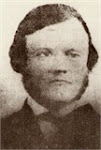Ever notice the low percentages in reports of Monona aldermanic election results? The winners are reported as getting 25% of the vote or so. This year,the Dane County Clerk's website shows a range from about 21% to 29%.
Every April, I can pretty much count on being asked by a co-worker, "Why does Monona elect alders with only 25% of the vote? How does that happen? Don't youse people vote or what?"
Those low percentages are arrived at dividing each candidate's vote total by the total votes received by all of the aldermanic candidates. This year, for example, Jim Busse received 2056 votes. The four candidates received a total of 8138 votes. So the standard calculation shows that Jim Busse received just 25.26% of the votes. Gee, this is discouraging. Jim sure seems more popular than that!
Get that dobber up, Jim! The percentages are so low because each voter gets to cast up to three votes. But what we really want to know is what percent of the voters cast a ballot for a particular candidate. (Al right, maybe by today - Friday - nobody is all interested in this question any more, but let's pretend, OK?)
Each voter gets only one ballot, so a much better way to calculate the percent is to divide a candidate's votes by the total number of ballots rather than votes cast in Monona.
There were 3940 ballots cast in Monona. A few voters didn't vote for either of the Supreme court candidates (Kloppenprosser received 3890 votes).
To refine it a bit further, I'll use the number of votes cast in the mayoral race - 3754. It's hard to imagine many voters cast their ballot in the myoral race without voting for at least one of the alders. Divide Jim's 2056 vote total by 3754 and - voila - we now know that Jim got a vote from 54.77% of "Monona-interested" voters.
Calculated in this manner, the percentage for each alder candidate:
Doug Wood 62.63%
Jim Busse 54.77%
Chad Speight 53.44%
Mike Veserat 45.95%
It's not perfect by any means, but it gives us a better feel for the results.
I suggested this method to Adam Mella and he says he may include it in a election recap story. But his big news is Adams's pending departure from the Herald Independent after five years of service. In my opinion, he has been the best editor since I started reading in 1985-ish. He really raised the level of reporting and commentary. He will be missed.
Friday, April 08, 2011
Subscribe to:
Post Comments (Atom)
















How do you feel about the notion of numbered alder seats? This would not be by ward, but at-large seats, much like the Madison School Board.
ReplyDelete"numbered alder seats"?
ReplyDeleteMaybe. It has possibilities, it retains the city-wide representation, which I like. It would allow someone to run against a specific alder (which could be for policy, personal, or other reason).
The big downside, however, is that we would probably have a lot of uncontested races. Right now, if we have four candidates, then all of the incumbents have to present themselves to the voters for re-approval. Under a numbered-seat system you would have to have six candidates.
Would challengers be more likely to run if they could target an alder? Maybe, but I doubt it and certainly not enough added candidates to ensure contested races across the board.
"How do you feel about the notion of numbered alder seats? This would not be by ward, but at-large seats, much like the Madison School Board. "
ReplyDeleteEvery year some notion or another like this comes up. I think it is time for change a change. Right now you have to scratch to find candidates-
Agreed on Adam, he will be missed.
ReplyDelete